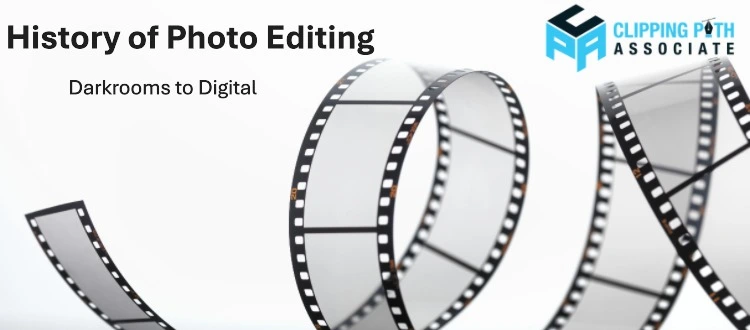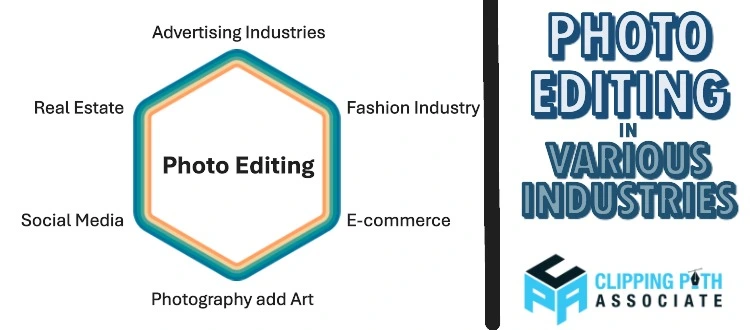Theodore Lowe, Ap #867-859
Sit Rd, Azusa New York
Find us here
History of Photo Editing: From Darkrooms to Digital

It is a story of innovation. It shows creativity. It is about always seeking perfection. As you learn this story, you will see how technology changed things. Each leap changed how you see and use images. Get ready to be interested. You will see the milestones and breakthroughs. These have made photo editing an essential part of your daily life.
Early Darkroom Techniques
Darkroom techniques started photo editing. These methods were new and important. They changed simple photos into expressive art. Photographers spent many hours in the darkroom. They practiced their skills. They learned to change images by hand. This work needed patience and precision. Let's look at how these techniques began.
Origins Of Photography
Photography started in the 19th century. It was a major new invention. Early photos used glass plates. These plates reacted to light. They had to be handled carefully. Taking a photo took a long time. Photographers needed to be patient.
The first cameras were large and heavy. They needed strong tripods. All the pictures were black and white. They had a special charm. Early photographers were very creative. They played with light and shadow.
Manual Photo Manipulation
Manual manipulation was a type of art. Photographers changed images by hand. They used few tolls named brushes and knives and they retouch the negatives and prints.This made the final picture look better.
Techniques included dodging and burning. Dodging made areas lighter. Burning made areas darker. These methods made the image have depth. They created a mood or emotion. Photographers also used masks. This helped them focus on only part of the image. It made the changes precise.
Tools And Chemicals Used
Darkroom techniques used special tools. Enlargers shined negatives onto photo paper. They also controlled the picture size. Trays held the needed chemicals. Developers made the image appear. Fixers kept the image stable. Stop baths halted the development process. These chemicals were very important. They made the photos last longer.
Photographers often wore gloves. This protected their skin. Red safelights lit up the darkrooms. This light kept the photo paper from reacting. This entire setup was key to good photo editing.
Emergence Of Film Photography
Film photography started in the late 19th century. This was a change from glass plates. Photographers began using rolls of film. This change offered more convenience and flexibility. Photographers could now take more pictures. They did not have to change plates often. The start of film photography was a major milestone. It created the basis for modern photography.
Advancements In Film Technology
Film technology improved rapidly. Early films were monochrome and lacked detail. With time, films became more sensitive and vibrant. Color films emerged, adding life to photos. Different film speeds allowed diverse shooting conditions. These advancements expanded creative possibilities. They also made photography more accessible.
Role Of Photographic Studios
Photographic studios played a crucial role. They offered professional services to the public. Studios ensured high-quality prints and portraits. They were hubs for artistic expression. Many iconic photographers started in studios. Studios also helped popularize film photography. They made it a mainstream activity.
Iconic Images And Their Impact
Film photography produced many iconic images. These images captured historical moments and famous personalities. They influenced public opinion and culture. Iconic photos brought awareness to social issues. They also inspired artistic movements. Their impact is still felt today. They are timeless pieces of visual history.
Rise Of Digital Technology
The rise of digital technology transformed photo editing. This transformation began with the introduction of digital cameras. Digital advancements made editing easier and more accessible. Let's explore how digital technology changed photography.
Introduction Of Digital Cameras
Digital cameras entered the scene in the late 20th century. These cameras used electronic sensors. This replaced traditional film rolls. Images could be viewed instantly. This was a significant shift. Photographers no longer waited for film development. Digital cameras made photo editing more flexible. Images could be edited right away. This convenience attracted many users.
Transition From Film To Digital
The transition from film to digital was gradual. Digital technology offered many benefits. It reduced costs. No need to buy film repeatedly. Editing became more convenient. Software like Photoshop gained popularity. Photographers could now manipulate images easily. This was not possible with film. Digital technology opened new creative avenues.
Impact On Photography Industry
The impact on the photography industry was profound. Digital cameras were more affordable. This democratized photography. More people started taking photos. The demand for photo editing software increased. New tools emerged for professionals and amateurs alike. The industry had to adapt quickly. Digital technology reshaped photography norms. It influenced how images were captured and shared.
Evolution Of Photo Editing Software
The journey of photo editing software reflects technology's rapid advancement. From simple tools to advanced programs, editing has transformed. This evolution made editing accessible to everyone, not just professionals. Let's explore the key phases in this journey.
Pioneering Editing Tools
Early photo editing was basic. Tools like Paint were used. Paint allowed users to make simple changes. These changes included cropping and adding text. It was limited but laid the groundwork. This phase was crucial in the digital editing story.
Photoshop Revolution
Photoshop completely changed the editing world. It was first launched in 1988. This software offered many advanced features. Tools like layers, filters, and color adjustments became very popular. Photoshop quickly became the main software for photographers. It set the new standard for all digital editing.
Modern Editing Software
Today, editing software is varied and easy to use. Programs like Lightroom and GIMP are very popular. They have powerful tools for making detailed edits. Mobile apps also let people edit on their smartphones. This easy access helps everyone be more creative.
Influence Of Social Media
Photo editing changed greatly with the growth of social media. As these platforms got bigger, the way we edit photos transformed. We also changed how we share them. Social media has affected what looks good in photos. It has also changed how influencers and brands use pictures. This shift happened because people need unique and engaging content.
Platforms For Photo Sharing
Platforms like Instagram, Facebook, and Snapchat changed how we share photos. Each platform gives users editing tools. Users can easily change brightness and contrast. They can also add filters. This easy access made photo editing a normal part of sharing. People now expect to see edited photos in their feeds.
Trends In Photo Aesthetics
Social media platforms created photo style trends. Filters and presets became popular because they are easy to use. Common styles include warm tones, vintage looks, and minimalistic styles. These trends change as platforms add new editing features. Users quickly adapt to keep their content looking good.
Role Of Influencers And Brands
Influencers and brands greatly affect photo editing trends. They use high-quality, edited images. This helps them connect with their followers. A consistent editing style makes their brand easily recognizable. Influencers often start new trends with their unique styles. Their followers then copy these trends. This causes the trends to spread across the platform.
Future Of Photo Editing
Photo editing is about to change greatly. Technology is advancing very fast. The future holds many exciting possibilities. New tools and techniques will improve how we manipulate images. These changes will completely redefine how we use photos. Let's look at the main trends that are shaping photo editing's future.
Ai And Machine Learning
AI and machine learning are changing photo editing. These technologies give us smart editing solutions. They learn from lots of data to be more accurate. AI can improve photos with very little work from a person. It can easily adjust colors, sharpen details, and remove blemishes. Machine learning predicts what a user might like for personalized edits. This saves time and gives results that fit the user. AI-driven tools help everyone, from amateurs to professionals.
Virtual And Augmented Reality
Virtual Reality (VR) and Augmented Reality (AR) are increasing editing possibilities. They give a very immersive editing experience. Users can work with photos in a three-dimensional space. This allows for special visual effects. VR and AR tools let you edit on virtual canvases in real time. You can see changes happen immediately. This dynamic method boosts creativity. It adds a new dimension to changing images. The future of photo editing will use these technologies.
Ethical Considerations
Ethics are very important for the future of photo editing. As editing tools get stronger, the risk of misuse grows. Changing images can lead to false information. Keeping images authentic is now essential. Users must think about the impact of their edits. Technology needs to support ethical standards. Transparency and integrity must guide how we edit photos. Balancing creativity with ethics will be crucial. Future tools will need safeguards to ensure people use them responsibly.
Frequently Asked Questions
What Is The Origin Of Photo Editing?
Photo editing began in the 19th century. This happened when photography first appeared. Early methods involved fixing negatives and changing prints by hand. The process improved a lot with digital technology. This allowed for more advanced editing tools. Today, photo editing is a critical part of many businesses. This includes advertising and social media.
How Has Digital Technology Influenced Photo Editing?
Digital technology completely changed photo editing. It brought in software like Adobe Photoshop.These tools offer exact control. They give endless options for changing images. This shift made editing easy for amateurs and professionals. It also caused digital art to grow. This technology has transformed industries like advertising and the media.
What Were Early Photo Editing Techniques?
Early photo editing used manual methods. This involved retouching negatives. It also included hand-coloring prints. Photographers used tools like airbrushes and scalpels to change images. These techniques needed great skill and lots of patience. Even though they took much effort, they set the foundation for today's digital editing techniques.
Why Is Photo Editing Important In Modern Photography?
Photo editing makes visual storytelling better. It lets photographers adjust things like color, contrast, and composition. Editing helps to fix any flaws. It also brings creative ideas to life. We live in a digital age full of visual content. Editing makes sure images stand out. This makes it a vital skill for all photographers and content creators.
Conclusion
Photo editing has a rich history. It started with simple retouching. Now, we use advanced digital tools. These changes greatly affected photography. Today, anyone can edit photos easily. This journey shows human creativity and technological progress.
Editing moved from darkrooms to smartphones. This evolution still continues. Photo editing will keep growing. It will adapt to new trends. As we use these tools, creativity has no limits. The future holds endless possibilities for editing. You should explore, create, and cherish memories with this powerful art.
Related blog posts
Importance of Photo Editing in Various Industries: Transformative Impact
Imagine scrolling through a website and stumbling upon a blurry, poorly-lit product photo. Chances are, you might click away, right?


